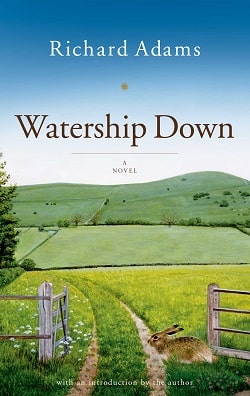Watership Down, written by Richard Adams, is a timeless classic that transcends the boundaries of children's literature, offering profound insights into themes of survival, leadership, and the quest for freedom. Set against the backdrop of England's picturesque Downs, the novel follows a group of rabbits as they embark on a perilous journey to escape the destruction of their home, Sandleford Warren. This stirring tale is not just an adventure story; it is a rich tapestry woven with allegorical threads that resonate with readers of all ages.
The narrative begins with the character of Fiver, a small rabbit with a unique gift for foresight. His visions of impending doom prompt him to convince his brother, Hazel, and a small group of fellow rabbits to flee their warren. This initial act of courage sets the stage for a journey filled with trials and tribulations. Adams masterfully develops the characters throughout the story, allowing readers to witness their growth and transformation in the face of adversity. Hazel emerges as a natural leader, embodying qualities of bravery, intelligence, and compassion. His evolution from a timid rabbit to a decisive figure is both inspiring and relatable.
One of the most striking aspects of Watership Down is its exploration of themes related to community and governance. As the rabbits encounter various societies, such as the oppressive regime of Efrafa led by the tyrannical General Woundwort, Adams delves into the complexities of leadership and the importance of individual freedoms. The contrast between the authoritarian rule of Efrafa and the democratic ideals that Hazel and his companions strive to establish in their new home highlights the significance of choice and autonomy. This theme resonates deeply in today's world, where discussions about governance and personal liberties are ever-relevant.
Moreover, the novel is rich with symbolism and allegory. The journey of the rabbits can be seen as a metaphor for the human experience, reflecting our struggles against oppression and the search for a place where we can thrive. The rabbits' encounters with various predators and challenges serve as reminders of the harsh realities of life, yet they also emphasize the importance of resilience and camaraderie. The bonds formed among the rabbits are a testament to the strength found in unity, showcasing how collaboration can lead to overcoming even the most daunting obstacles.
Adams' writing is both lyrical and vivid, painting a detailed picture of the English countryside and the lives of its inhabitants. His ability to anthropomorphize the rabbits without losing their essence as animals is commendable. Each character is distinct, with their own personalities and quirks, making them relatable and endearing. From the wise and nurturing Bigwig to the loyal and steadfast Dandelion, the ensemble cast enriches the narrative, allowing readers to invest emotionally in their journey.
Another noteworthy element of Watership Down is its incorporation of folklore and mythology. The rabbits often share stories of their ancestors and the mythical figure El-Ahrairah, a trickster hero who embodies cleverness and resourcefulness. These tales not only serve to entertain but also provide moral lessons and cultural context, deepening the reader's understanding of the rabbits' world. This blend of fantasy and reality creates a unique reading experience that captivates the imagination.
In terms of pacing, Adams strikes a balance between action and introspection. The journey is fraught with danger, yet moments of reflection allow readers to pause and consider the broader implications of the rabbits' struggles. This thoughtful pacing ensures that the narrative remains engaging while also encouraging deeper contemplation of its themes.
Comparatively, Watership Down shares similarities with other works of animal fiction, such as Animal Farm by George Orwell and The Tale of Despereaux by Kate DiCamillo. However, while Orwell's novella serves as a political allegory critiquing totalitarianism, Adams' work is more focused on the themes of survival and community. Both authors, however, utilize animal characters to explore complex human issues, making their stories resonate on multiple levels.
The impact of Watership Down extends beyond its pages. It has inspired adaptations in various forms, including animated films and television series, which have introduced the story to new generations. Its enduring popularity speaks to the universal themes it addresses and the emotional depth of its characters. Readers often find themselves reflecting on their own lives and the choices they make, drawing parallels between the rabbits' journey and their personal experiences.
In conclusion, Richard Adams' Watership Down is a remarkable work that combines adventure, philosophy, and social commentary within the framework of a captivating story. Its exploration of themes such as leadership, community, and the quest for freedom resonates deeply, making it a relevant read for both young and adult audiences. The character development is rich and nuanced, allowing readers to connect with the rabbits on a personal level. As they navigate the challenges of their world, we are reminded of the importance of courage, resilience, and the bonds that unite us. This novel is not just a tale of rabbits; it is a profound reflection on the human condition, making it a must-read for anyone seeking a story that is both entertaining and thought-provoking.











![I Became the Young Villain's Sister-in-Law [Official]](/upload/pic/manga/i-became-the-young-villains-sister-in-law--official-.jpg)












Reviews 0
Post a Reviews: